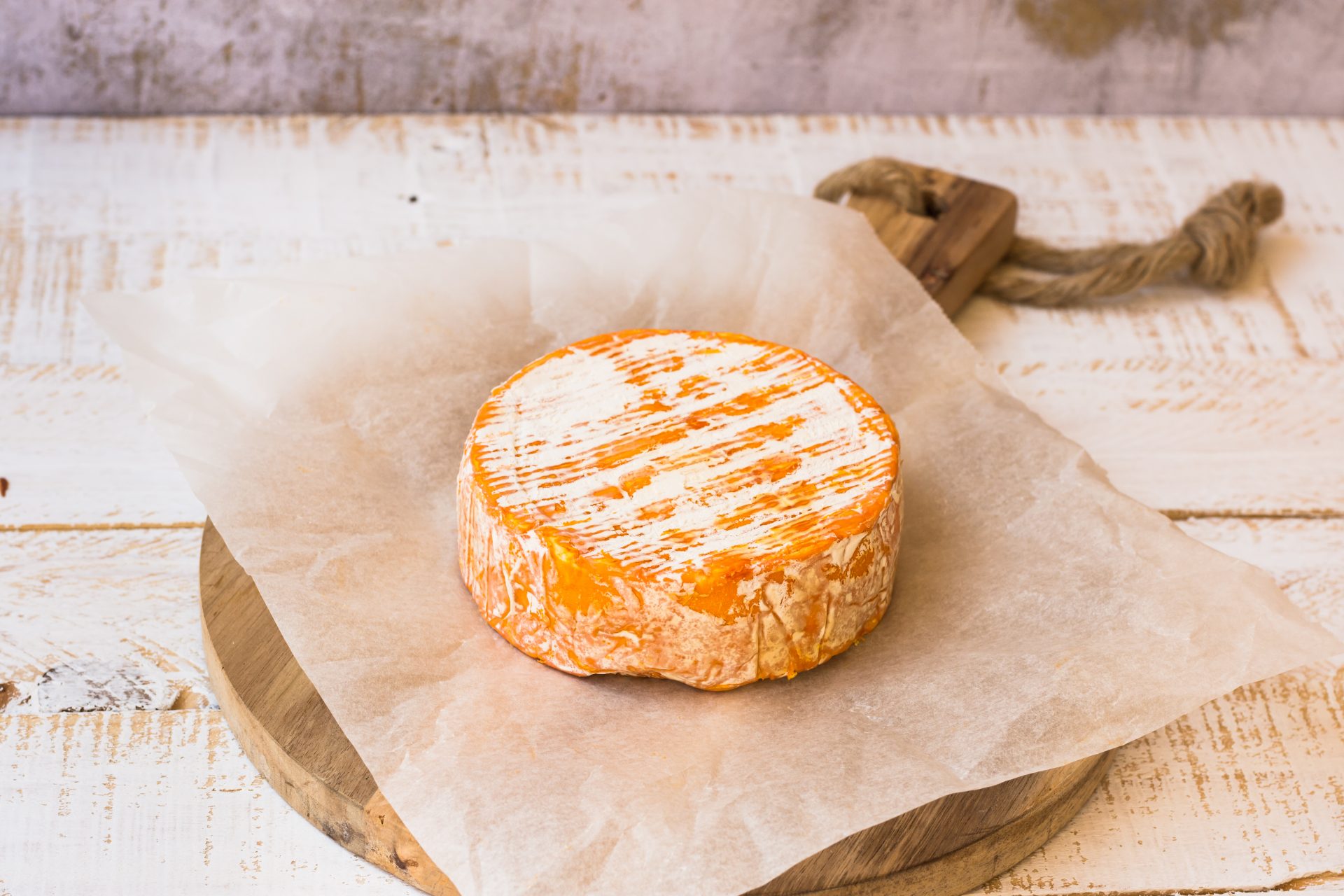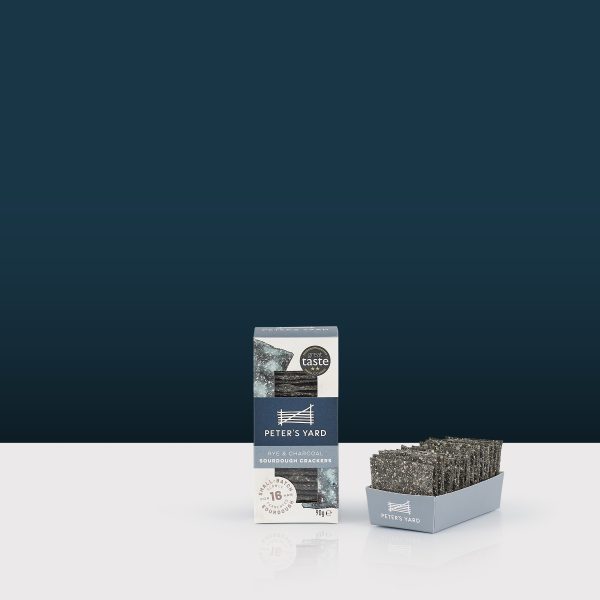What is a washed-rind cheese, and how can something smell so bad but taste so good? We delve into the history behind this unique subset of cheeses, and recommend a few good British examples for you to get started with.
We’ve all come a cropper to a stinky cheese at some point in our lives, and of all the cheeses that pass through our kitchen and our fridges, washed-rind cheeses are certainly amongst the most distinctive. Part of that is because they’re almost universally smelly – you can identify most by the intense aroma of farmyard (and/or sweaty feet) – but they’re also made in a very specific way. Think of a soft-ripened cheese like Camembert or Brie – these cheeses are shaped and then matured, during which time white mould grows on the rind.
Washed-rind cheeses are formed and shaped in a similar way, but during the maturation process they’re washed – often with a brine solution but sometimes with alcohol like beer, wine or brandy. This makes the rind of the cheese far more hospitable to bacteria that thrive in salty conditions – the most notable of these is brevibacterium linens, but there are many others – and these are the bacteria that give washed-rind cheeses their distinctive orange-red hue, as well as that pungent smell.
Don’t worry though – although they might smell dangerous, washed-rind cheeses are anything but. The bacteria create delicious, savoury, slightly yeasty flavours across the rind, but because these cheeses develop most of their flavour during the maturation process, they vary hugely once you cut into them. Take Gruyère, Taleggio, Reblochon and Epoisse de Bourgogne for example – they’re all washed-rind cheeses, and all quite different in flavour and texture.
[ifso id=”222862”]
Like many things cheese-related, the practice of washing cheese rinds started in France, where sixteenth century monks used to make cheeses in their monasteries as a way to feed themselves. The conditions in monastery cellars were ideal for cheese bacteria, but because the conditions weren’t easily controlled, the cheeses were more liable to develop bad rinds. To avoid this, the monks used to wash the rinds with whatever they had to hand – often this was beer or brandy, as it was more plentiful than clean drinking water! This style of rind washing created softer, creamier cheeses – Epoisse de Bourgogne is one of the earliest and best examples of a soft, washed-rind cheese.
A similar practice emerged in mountain areas around the same time – the extreme humidity of the mountains made it tricky to control the growth of cheese bacteria. As a result, cheesemakers began washing their rinds, but because drinkable water was plentiful in the mountains, they used brine rather than alcohol. Brine creates rather different conditions on the surface of the cheese, and results in harder cheeses. Gruyère is a perfect example of this – the cheese originated in the town of Gruyères, perched at around 2,500 feet above sea level in the Swiss alps.
Many of the best-known washed-rind cheese are made on the continent, but Britain also has a rich cheese history, and boasts some of the best washed-rind cheeses money can buy. The most famous of these is Stinking Bishop – a soft washed-rind cheese made in Gloucestershire. The name doesn’t in fact come from the smell of the cheese at all, but from the Stinking Bishop pears used to make the perry that the cheese is washed in. Hunts Court Farm – where the cheese is made – used to be home to Cistercian monks, and the cheese is made in the same way that they would have made cheese many centuries ago.
The UK’s washed-rind scene is growing too. King Stone Dairy in Oxfordshire won our Best New Cheese Producer award in 2016 with Rollright – a gorgeous buttery washed-rind cheese made in the French/Swiss style and wrapped in a band of spruce. The creamy, mellow interior makes it a good starting point for those who are looking for an easy starting point into washed-rind cheeses. If you want something with a bit more punch, take a look at St James cheese from Holker Farm Dairy in Cartmel, Cumbria. Unlike Stinking Bishop and Rollright, which use cow’s milk, St James is a sheep’s milk cheese, and an incredibly complex one at that. Flavours range anywhere from butter and cream to meat to yeast and fruit depending on the time of year – as the diet of the sheep changes from season to season, their milk changes too, and results in a different cheese each time.
The only thing you really need to avoid is cheeses with a brown or cracked crust – these are both signs that the cheese has over-matured and started to dry out, and the cracks can harbour less friendly bacteria that are best avoided. Other than that, washed-rind cheeses are something to be thoroughly enjoyed – just don’t be afraid of the smell!
Article courtesy of www.greatbritishchefs.com
[ifso id=”222839”]
Sourdough crackers and crispbreads
Our hand-baked sourdough crackers and crispbreads are the perfect accompaniment to artisan cheeses, cured meats and dips.
View Range





